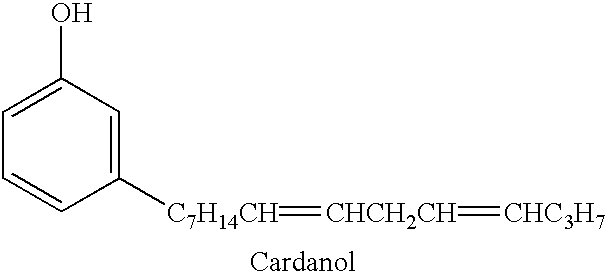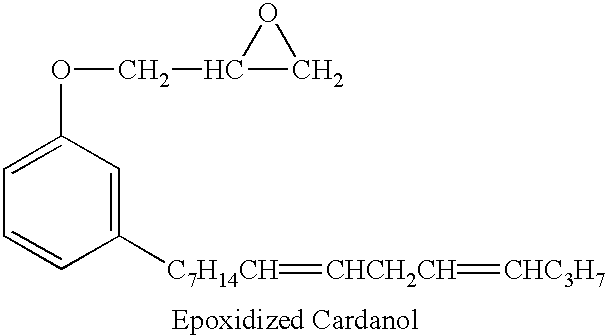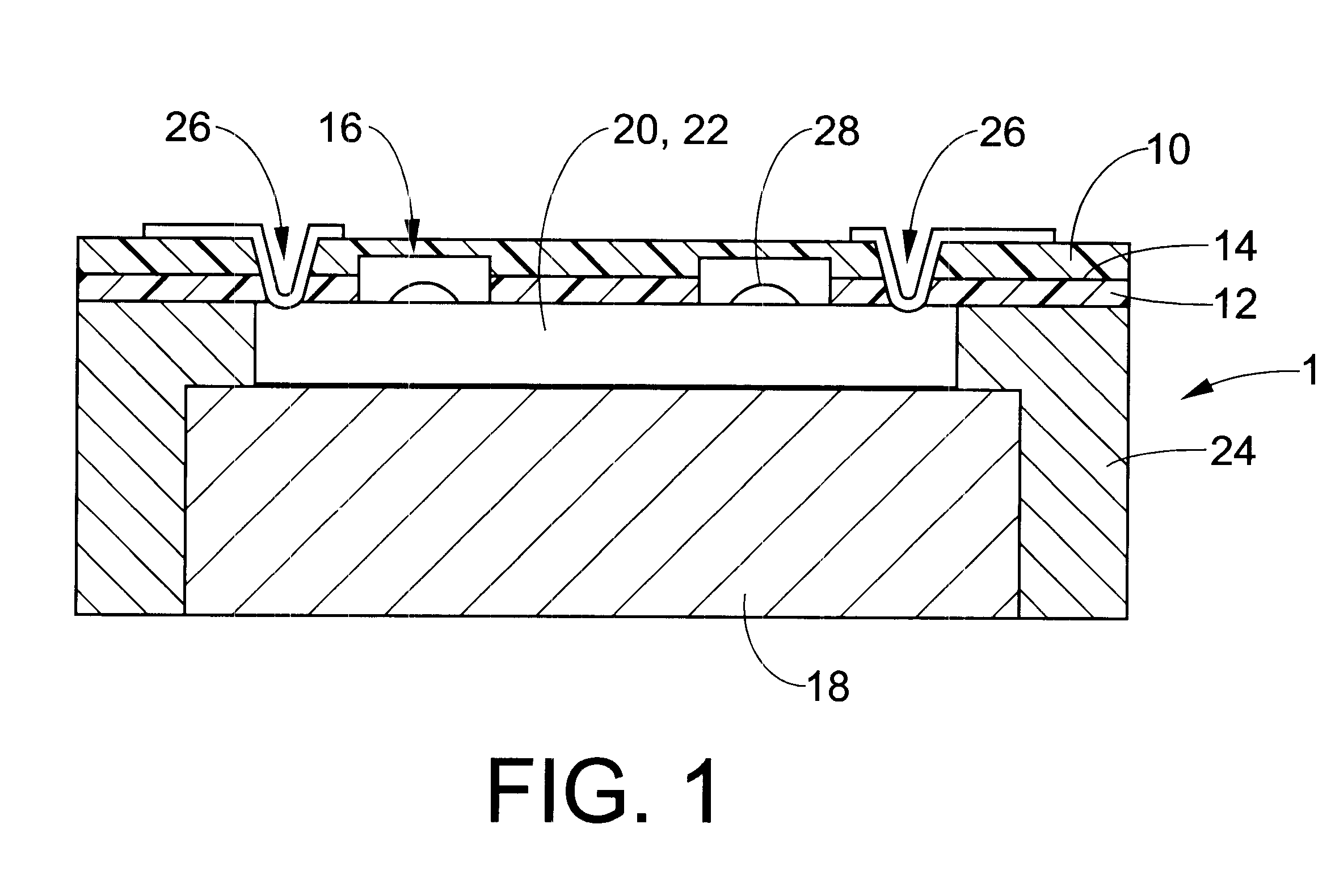Epoxy adhesive
- Summary
- Abstract
- Description
- Claims
- Application Information
AI Technical Summary
Benefits of technology
Problems solved by technology
Method used
Image
Examples
Embodiment Construction
Table 1 provides a list of components in representative adhesive compositions consistent with the present invention. Examples 1 and 5 are comparative examples with no epoxidized cashew nutshell liquid. Examples 2-4 are adhesive formulations including epoxidized cashew nutshell liquid.
Each of the compositions in the above example were separately applied to multiple ceramic substrates to a partial cured thickness of about 15 to 20 microns by spin coating and baking at 70.degree. C. for 15 minutes. Silicon chips, approximately 1 cm square, were applied to the adhesive coated samples periodically, over a time interval of 24 hours. After application of a chip to a substrate, the adhesive was cured and adhesion was measured using a shear tester. Good adhesion was acknowledged if the silicon die fractured before releasing from the adhesive. All compositions provided good adhesive properties if the partial cured films were fully cured within 6 hours or less of preparation. Compositions 2, 3...
PUM
| Property | Measurement | Unit |
|---|---|---|
| Angle | aaaaa | aaaaa |
| Temperature | aaaaa | aaaaa |
| Adhesivity | aaaaa | aaaaa |
Abstract
Description
Claims
Application Information
 Login to View More
Login to View More - R&D
- Intellectual Property
- Life Sciences
- Materials
- Tech Scout
- Unparalleled Data Quality
- Higher Quality Content
- 60% Fewer Hallucinations
Browse by: Latest US Patents, China's latest patents, Technical Efficacy Thesaurus, Application Domain, Technology Topic, Popular Technical Reports.
© 2025 PatSnap. All rights reserved.Legal|Privacy policy|Modern Slavery Act Transparency Statement|Sitemap|About US| Contact US: help@patsnap.com



